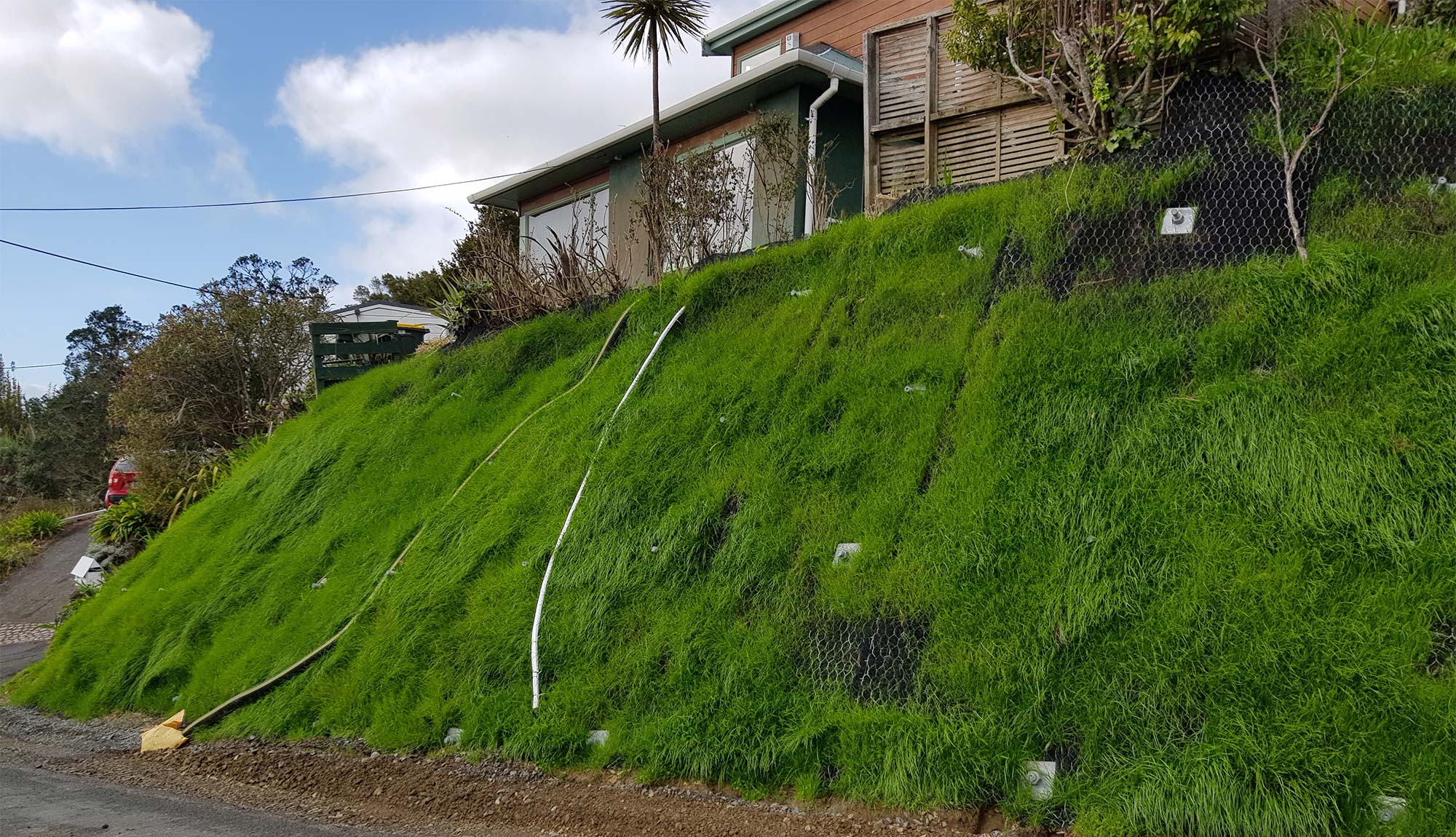The basics of grassing
Grassing / Vegetation Establishment for MSE Walls, TRM’s and Open Areas
When long term grass or vegetation is required as part of an overall solution it is important that consideration is given to this during the design stage of a project. This is an overview of the things to consider and we can provide additional information and guidance in relation to a specific project when required.
There are numerous grass varieties in New Zealand, each of which demonstrate different characteristics. Typically your managed sports turf stadiums utilise high end rye varieties where regular irrigation, fertilising and maintenance is common place. For a civil’s application such as an MSE wall it is rare for any ongoing maintenance to be considered after construction is complete. It is therefore important to understand a number of factors to ensure the long term success of the vegetation cover.
Grasses such as Kikuyu have a high drought, salt tolerance with low nutrient requirements and will form a dense and dominant thatch which can be extremely beneficial for steeper MSE walls, coastal and roadside applications. However, Kikuyu will only prevail in the upper North Island due to its low tolerance to sustained periods of frost and germination will not occur during the colder months. Its dominance also means that it will also inhibit natural native re-establishment through if this is a longer-term goal with the project.


There are a wide variety of fescues that creep and have a higher tolerance to drought than rye species but again will not germinate in the colder months. Rye grasses germinate all year round but are at the lower end of the spectrum in relation to drought tolerance. Lotus and clover’s are legumes and draw down nitrogen to feed the companion grasses. Often a blend of species with different characteristics will result in the best outcome for your project.
Wherever possible the ideal timing for grass establishment will be the autumn (March, April, May) where it is both warm and wet. For grass seed to germinate they need 5-10 days of sustained moisture. If this period is broken with dry spells then the seed will reset to day 1 of the germination until ultimately either germinating or dying after approximately 6 weeks. Once this is understood it is therefore possible to see the importance of direct contact between the seed and the ground and the components that will assist with moisture and warmth retention. The coir fibres in our BioCoir products and ECC3 act like a mulch layer above the seed protecting the seed from temperature extremes and assisting with germination. If successful germination occurs in autumn then the grass plants have approximately 6 months of sustained moisture to penetrate the ground prior to the dryer periods during summer. Although grass will establish well in spring a shallower root structure running into summer will increase the risk of mortality and vegetation failure. Application methodology with processes such as hydroseeding will also be beneficial in some scenarios as will pre seeded products in others.

We always welcome the opportunity to share our expertise during the design process to ensure the best long term outcome is achieved with your project.
Free Download!
The Basics of Grassing


